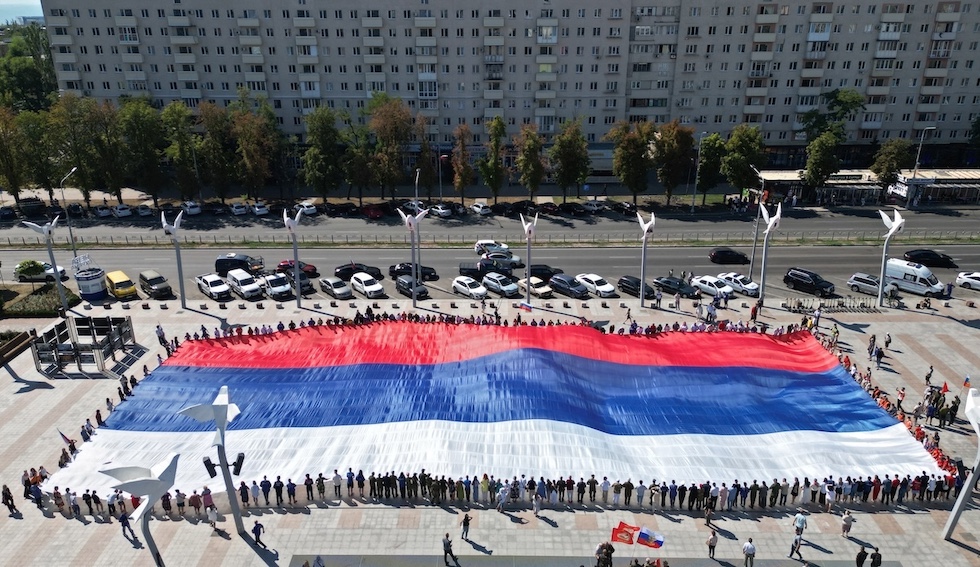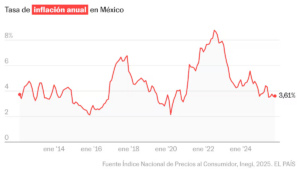
Russia and the United States’ new plan to end the war in Ukraine includes, among other things, huge territorial concessions for Russia: for example, Russia would gain the entire Donbas region, in eastern Ukraine, including some areas it does not currently control. To get an idea of what happened to Ukrainian cities under Russian control, you can look at what happened to Mariupol, a large port city in southeastern Ukraine, which Russia captured in May 2022 and has held since then. In recent years Russia, and the pro-Russian Mariupol government, have attempted to “Russify” the city, i.e. remove traces of previous Ukrainian rule, and make it more similar to Russian cities.
Mariupol was captured after a grueling siege, which lasted 86 days during which the Russians attacked and destroyed much of the civilian infrastructure: at that time a photo of a pregnant Ukrainian woman being carried on a stretcher after the Russian bombing of the city’s children’s hospital was widely circulated. Overall, an estimated 90 percent of residential buildings were destroyed or damaged. Many Ukrainians fled, leaving their homes: before the Russian invasion in 2022, more than 420 thousand people lived in Mariupol, while currently there are estimated to be around 100 thousand people.
Ukrainian refugees from Mariupol and the city of Zaporizhzhia at Lviv station in western Ukraine on March 20, 2022. (AP/Bernat Armangue)
Among the various ways in which the Russian government changed its identity was the reconstruction process following the conquest of the city. After occupying Mariupol, Russia made it difficult for fleeing Ukrainians to return and reclaim their homes. To be recognized as the owner of the house, you need to obtain Russian citizenship and present original ownership documents, which were often lost or destroyed in the siege. Returning to the city is unsafe for many people, as those wishing to do so must enter Russian territory and are therefore subject to checks and possible violations by Russian authorities.
In fact, after May 2022 Russia managed to nationalize thousands of homes, after officially declaring them “ownerless”. In many cases, the city authorities transferred them to Russian families. Oleksandra Stolyar, a 46-year-old Ukrainian woman who lived in Mariupol but was forced to flee the Russian invasion and now lives in Berdychiv, a city in central Ukraine, told New York Times that he knew that Russia was planning to confiscate his house, but he did not want to apply for Russian citizenship, thereby losing his property rights.

A woman walks past a construction site in Mariupol decorated with Russian flags and the slogan: ‘From St. Petersburg to Mariupol’, 6 August 2025 (REUTERS/Alexander Ermochenko)
In other cases, as told among others by the site Belling Catoriginal buildings destroyed during the siege were demolished, and new palaces were built in their place. Belling Cat managed to identify more than 50 buildings with 6 thousand new apartments, which were offered for sale to Russian citizens.
Russian real estate agents often present the apartments as comfortable, aimed at wealthy people and families: to make purchasing easier for Russian citizens, and therefore ensure more Russians move to the city, Russia guarantees loans at very low interest rates to all citizens wishing to buy a home in the occupied territories of Ukraine. The rate offered is around 2 percent: much lower than the rate usually applied in the rest of Russia, which is around 20 percent.

A large Russian flag is raised in Mariupol on National Flag Day, August 22, 2025 (REUTERS/Alexander Ermochenko)
It is currently unclear how many Russians actually moved to Mariupol, but efforts to make it a Russian city are clear to see. Since Russia occupied the city, signs of ownership of the city, such as monuments and murals, have been removed. Russia considers Mariupol, like other occupied territories in Ukraine, to be an integral part of its territory: among other things, rubles (Russian currency) are used in the city, cars have Russian license plates, and the Russian flag is flown almost everywhere. Many street names have been changed, both to celebrate Russian history and to make it harder for those leaving Russia to prove they own a home.
According to some experts, the goal of reconstruction is primarily to assert Russian sovereignty over Mariupol, as well as other occupied territories, and to erase the memory of the war and crimes committed by Russia. There are several examples: the city government decided to change the name of one of the streets near the Azovstal steel plant, where hundreds of Ukrainian soldiers resisted the Russian army. The street, once called Azovstal Street, has been renamed Tula Street, after the Russian city that helped with the reconstruction of Mariupol. The Mariupol Drama Theatre, which Russia bombed and killed hundreds of people, has also been completely rebuilt and is expected to reopen in the coming months.





